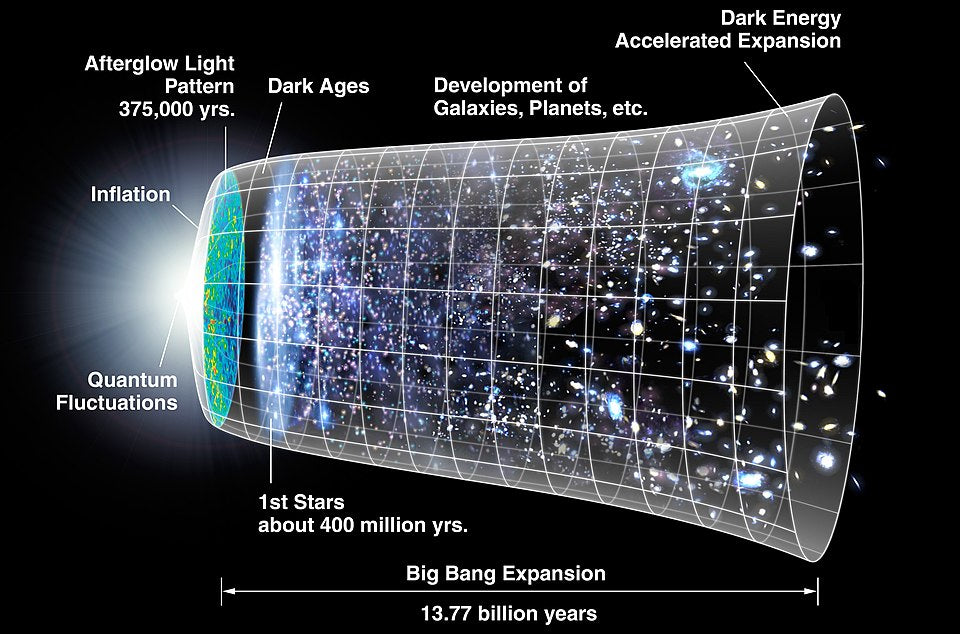
What the Big Bang Got Wrong
What the Big Bang Got Wrong
Why the standard model fails—and why Cosmic Seed Theory makes more sense.
For nearly a century, the Big Bang has been the dominant story of how the universe began. But now, the cracks are starting to show.
From galaxies that appear far too early, to a model that claims everything came from nothing, the traditional view is increasingly out of sync with what we actually observe.
It’s time to take a closer look.
Here are five of the biggest problems with the Big Bang theory—and how Cosmic Seed Theory offers better answers.
1. No Center? That Doesn’t Add Up
The Big Bang claims the universe exploded from a single point—but then insists it has no center. That’s not just confusing—it’s evasive.
If everything expanded from somewhere… where is that somewhere?
Cosmic Seed Theory clears up the contradiction. It says each galaxy has its own center, born from a supermassive black hole called a Cosmic Seed. When that seed reaches a critical threshold, it triggers a Galactic Big Bang—a localized expansion that reshapes its surroundings.
Your Big Bang didn’t happen “everywhere.”
It happened right in the heart of your galaxy.
2. Galaxies Are Too Early—and Too Perfect
According to standard theory, galaxies should take billions of years to assemble.
But JWST has found massive, mature galaxies appearing just a few hundred million years after the supposed Big Bang. That’s far too soon, and far too organized.
Cosmic Seed Theory explains it naturally:
Those galaxies aren’t early—they’re the result of their own expansion events, or they existed long before ours. Each galaxy has its own timeline, its own cycle of creation and renewal.
3. Dark Matter: A Necessary Myth?
The Big Bang model requires dark matter to explain how galaxies rotate and hold together.
But here’s the catch:
We’ve never found it. It doesn’t emit light, can’t be directly observed, and remains entirely hypothetical.
Cosmic Seed Theory says: we don’t need it.
Galaxies are born spinning—because their black holes were spinning. That built-in angular momentum explains their dynamics without needing six times more invisible mass.
4. “Nothing Existed Before” Isn’t an Answer
One of the strangest claims of the Big Bang theory is that time itself began at the bang—meaning nothing existed before it. No cause, no space, no prior reality.
That’s not a scientific explanation. That’s avoiding the question.
Cosmic Seed Theory offers something more grounded:
Our Big Bang wasn’t the beginning of everything—it was simply one event in a much older, evolving cosmos. Hydrogen Genesis and localized expansion explain how galaxies continually emerge across deep time.
5. Everything from Nothing? That’s Not Science
The Big Bang model proposes that all matter, energy, and space came from a singularity—a mathematical abstraction often equated with “nothing.”
That’s not just puzzling—it breaks the rules of science. No testable mechanism. No chain of cause and effect.
Cosmic Seed Theory keeps it simple and physical:
Matter is recycled, not magically created. Cosmic Seeds gather mass and energy until they erupt. The cycle is repeatable, observable, and consistent with known physics.
The Big Picture
The Big Bang theory helped launch modern cosmology—but it no longer fits the evidence.
Cosmic Seed Theory doesn’t reject everything. It keeps what works—but replaces the paradoxes and patchwork fixes with something better:
- A center that makes sense
- A natural origin grounded in physics
- No need for exotic particles or invisible matter
- And a cosmos that evolves locally, gradually—not in a single moment
If the universe feels older, more structured, and more intelligent than we’ve been told…
That’s because it is.
